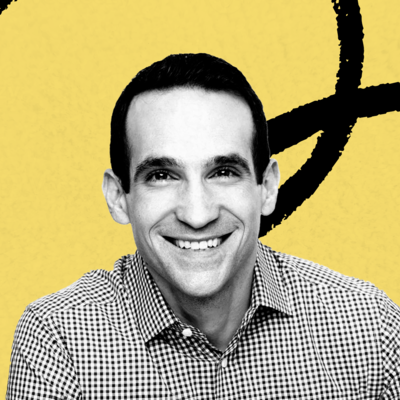
This week’s article is dedicated to the memory of George Floyd and the millions of people who have suffered racial injustice in America. Nathan and I are donating 10% of our subscriber revenue for this week to organizations working to build power in black communities like the NAACP Legal Defense Fund and the Black Futures Lab.
Hey y’all —
This week has been a rough one, and my heart breaks for everyone in this country suffering from racism and police brutality.
Even though it can be hard to think about productivity at a time like this, I think it’s still important to bring you the stuff that you paid for.
Let’s get into it.
Weekly Priority Sheet
My todo list is infinite. I bet yours is too.
Seriously, even if I was 100% as productive as I want to be 100% of the time, I’d still have things left undone. There’s too much work for too little time.
But what’s interesting is this: most of the work doesn’t matter. Most of those little items on that infinite todo list probably won’t make a big impact on the course of your life.
The problem is that modern digital todo list apps let each item on your list take up the same amount of space — and thus take up the same amount of emotional weight. The “ship a new blog post” todo list item seems just as weighty and important as the “respond to that one email” item.
But the negative consequences for not shipping a blog post, and the negative consequences for not responding to a random email are not the same.
If you skip shipping your blog post, you miss out on the opportunity to put your voice into the world. If you don’t respond to one email, you almost certainly miss out on nothing.
But that isn’t reflected in the way your todo list is constructed.
When all of the items on your todo list are the same size and the same level of importance you’re likely to feel overloaded — like there’s an infinite weight of STUFF TO DO blanketing you at all times, and no matter how much you fight and thrash the list keeps growing instead of getting smaller.
In order to beat this you have to keep an alternative todo list that helps you keep perspective. You want to list out a limited number of your top priorities at the top, and then let all the other stuff that you could do but don’t have to sit towards the bottom.
This way your system works to make sure that nothing falls through the cracks (it’s all written down) but also helps make things less overwhelming because you’re only holding yourself responsible for making your top priority items happen.
I use a Weekly Priority Sheet to fight this feeling. It has three sections:
- Top 3 Priorities
- Nice to Haves
- Areas
Let’s talk about each section.
Top 3 Priorities
These are what they sound like — they’re the things I must get done, no matter what. They are the things in my week that are actually important.
I limit it to three and only three things. And I think this is critical — if I can’t decide on three things, it means I haven’t prioritized my todos correctly. Doing the work of paring down my priorities like this forces me to make hard choices, but that’s the point.
Nice to Haves
These are also what they sound like — they’re the things that seem important but don’t rise to the level of Top 3.
If I get half of them done in a week I’m satisfied. But having them walled off from my Top 3 Priorities helps me psychologically feel okay if I don’t get all of them done.
Areas
This is the list of everything - it includes the stuff in top 3 priorities, and nice to haves, but it also includes all of the other small tasks and detritus that I need to keep track of. To make it easier to organize, I categorize everything by areas of responsibility in my life.
Areas of responsibility are things like Superorganizers, or my book, or my friends. I list out each area that’s important to me, and then I use the space underneath to categorize the rest of the zillions of todos that could be relevant to that area. This is where I can go wild without limits, and keep everything in one place — but still know that the things I truly need to get done are in my Top 3.
I find that it’s nice to categorize all of my todos by areas so I can make sure I’m making progress on each of the things in my life that are important to me. It’s similar to Henrik Werdelin’s 8 + 1 Method.
Here’s what it looks like when it’s filled out:
Top 3 Priorities:
- Add a new writer to the bundle
- Reach out to one friend that might need it
- Write a new member’s only post
Nice to Haves:
- Write a new interview
- Inbox 0
- Go to Zen this Sunday
Areas:
-
Everything Bundle
- Add a new writer to the bundle
- Inbox 0
-
Superorganizers
- Write a new interview
- Write a new member’s only post
-
Book
- Write 1,000 words
-
Friends
- Reach out to one friend who might need it
-
Community / Spirit
- Go to Zen this Sunday
-
Become more open and vulnerable
- Have a tough conversation with Nathan
-
Fitness
- Run
- Run / Workout
- Run / Workout
I want to take a second to note one thing: my Areas are a little non-traditional. There’s work stuff at the top, for sure. But the bottom of my Areas are things that seem a little soft — like friends, or spirit, or becoming more open and vulnerable.
I keep these things in there because they’re what’s hard for me. It’s easy for me to work all of the time and ignore the other things that make me happy (and that make life worth living.) Listing out the areas of your life that it might be easy to forget is a great way to make sure that they stay top of mind — and you hold yourself to a standard of performance in them that you might only usually apply to traditional work items.
How to put a Weekly Priority sheet into practice
Construct your Weekly Priority sheet from the bottom up. First, list out all of your Areas. Then, underneath each area write each todo that corresponds to it.
So to start you priority sheet might look like this:
Areas
-
Work
- Inbox 0
- Finish project
- Write blog post
-
Family
- Dinner with partner 2x
-
Learning
- Read for 1 hour
Then, once you’ve created your areas pick your Top 3 priorities for the week from your Areas. That might be something like:
Top 3
- Finish project
- Write blog post
- Dinner with partner 2x
Areas
-
Work
- Inbox 0
- Finish project
- Write blog post
-
Family
- Dinner with partner 2x
-
Learning
- Read for 1 hour
Finally, if there are tasks that still seem important but that didn’t make your Top 3, put them in Nice to Haves:
Top 3
- Finish project
- Write blog post
- Dinner with partner 2x
Nice to Haves
- Read for 1 hour
Areas
-
Work
- Inbox 0
- Finish project
- Write blog post
-
Family
- Dinner with partner 2x
-
Learning
- Read for 1 hour
That’s it! I hope this helps you cut down on the clutter and focus on what’s important to you this week. Let me know how the system works for you!
Focused Work Sessions
I get a lot of subscriber questions about how to get more focused work done. It’s been covered before — particularly in this interview I did with Nir Eyal — but I wanted to take some time to address focused work.
Everyone knows that focused work is important. They’re invaluable for doing creative work — even one meeting can throw off your balance and ruin your sense of flow. ‘
But the idea of focused work can be harmful to the extent that we beat ourselves up when we don’t get enough of it. And getting enough can be difficult. Everyone feels like they’re not getting enough, and everyone wants to know how to get more.
The answer is — depending on your job or your family situation — sometimes consistent, day-long blocks of focused work just aren’t possible. If you’re in a situation like that, it’s important to recognize it, and rather than beating yourself up for not being able to achieve the amount of focused work you want to, take action to make the best of the situation.
The first thing to do is carve out smaller focused work blocks. Usually these can be found at the beginning or end of the day. Even though 1 hour or 2 hours may not seem like enough to get stuff done, it’s better than nothing. Start there — and make it consistent.
Second, leave breadcrumbs for yourself. Your brain is bad at context switching. If you’re only spending an hour or two on creative work per day, or you’re coming back to your creative work after a few days away, you’ll find that most of the context for it has disappeared.
This often leads to situations where you spend the first 30-45 minutes catching up on what you did during your previous session rather than pushing forward.
If you leave yourself breadcrumbs at the bottom of whatever you’re working on, you’ll be able to load the context into your brain far more quickly and get started on what matters: pushing the work forward in the time you have available.
For example, on the weekends I write a novel. I’ve been working on it for the past 2.5 years, I’m on my fourth draft, and it’s really important to me that I keep going until I finish. But it’s not my sole focus — I only work on it on Saturdays.
So when I sit down to write on Saturday morning, I often haven’t thought about the book since last Saturday. Which means I pretty much have no idea what I was writing last.
At the bottom of every working document I leave breadcrumbs about where I think it’s going next:
- Character X is thinking this
- Character Y wants Z which conflicts with X
- This causes N thing to happen
- Maybe: Character Y has a change of heart?
It’s just a few sentences that help me turn my brain on and get me back into flow quickly.
You can adapt this for any sort of creative work.
So if you’re beating yourself up about not getting enough focus time do these two things:
- Start small, even 1-2 hours is enough to get something done
- Leave breadcrumbs, make sure you can load the context from the previous session into your head quickly, so that you can make progress faster
The Only Subscription
You Need to
Stay at the
Edge of AI
The essential toolkit for those shaping the future
"This might be the best value you
can get from an AI subscription."
- Jay S.
Join 100,000+ leaders, builders, and innovators

Email address
Already have an account? Sign in
What is included in a subscription?
Daily insights from AI pioneers + early access to powerful AI tools











Comments
Don't have an account? Sign up!